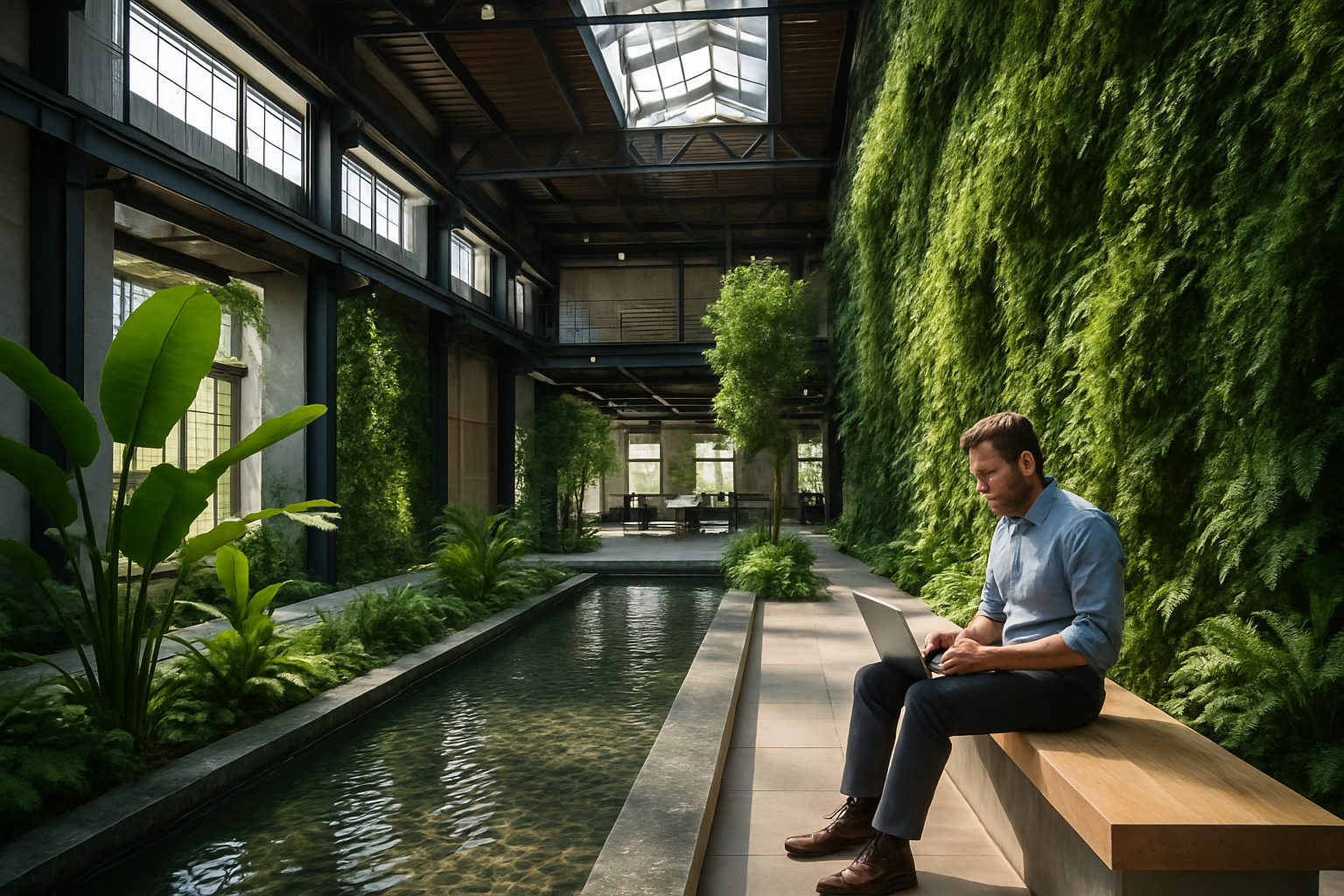Biophilic Design: Bringing Nature Indoors for Optimal Health
Can our living spaces impact our well-being as much as diet and exercise? Imagine a world where your home or office actively contributes to your health, reducing stress and boosting productivity. Welcome to the realm of biophilic design, a revolutionary approach that's transforming how we think about our indoor environments and their effects on our physical and mental health.

The Origins of Biophilic Design
The term biophilia, meaning love of life or living systems, was coined by social psychologist Erich Fromm in the 1960s. However, it was biologist Edward O. Wilson who popularized the concept in his 1984 book Biophilia, proposing that humans have an innate tendency to seek connections with nature and other forms of life.
This idea laid the groundwork for biophilic design, which emerged as a distinct field in the 1990s. Pioneers like Stephen Kellert and Judith Heerwagen began to explore how incorporating natural elements into built environments could improve human health and well-being. Their work has since inspired architects, designers, and health professionals to rethink our approach to indoor spaces.
The Science Behind Biophilic Design
Research has consistently shown that exposure to nature has significant positive effects on human health. A landmark study by Roger Ulrich in 1984 found that hospital patients with views of nature recovered faster and required less pain medication than those facing brick walls. This groundbreaking research sparked a wave of studies investigating the health benefits of nature exposure.
Subsequent research has revealed that biophilic design elements can:
-
Reduce stress and anxiety
-
Lower blood pressure and heart rate
-
Improve cognitive function and creativity
-
Enhance mood and overall well-being
-
Boost productivity in work environments
-
Accelerate healing in healthcare settings
These benefits are attributed to various factors, including the stress-reducing effects of natural views, the air-purifying properties of indoor plants, and the positive impact of natural light on our circadian rhythms.
Key Elements of Biophilic Design
Biophilic design incorporates a wide range of natural elements and patterns into built environments. Some key features include:
-
Direct nature integration: This involves bringing actual natural elements indoors, such as plants, water features, and natural materials like wood and stone.
-
Indirect nature references: These are representations of nature, including images, artwork, or patterns that mimic natural forms and textures.
-
Human-nature relationship elements: This aspect focuses on spatial configurations that reflect natural environments, such as prospect-refuge relationships (areas that provide both openness and shelter) and organized complexity.
-
Natural light and ventilation: Maximizing exposure to daylight and fresh air is crucial in biophilic design, often achieved through large windows, skylights, and open floor plans.
-
Sensory variability: Incorporating subtle changes in light, temperature, and air movement to mimic natural environments and stimulate our senses.
Implementing Biophilic Design in Various Settings
Biophilic design principles can be applied to a wide range of environments, each with unique considerations and benefits:
Homes
In residential spaces, biophilic design can create a sanctuary that promotes relaxation and well-being. This might include indoor gardens, natural material finishes, and strategically placed windows to maximize natural light and views.
Offices
Workplaces incorporating biophilic elements have reported increased productivity, creativity, and employee satisfaction. Features like living walls, nature-inspired artwork, and access to outdoor spaces can transform the work environment.
Healthcare Facilities
Hospitals and clinics are increasingly adopting biophilic design to enhance patient recovery and staff well-being. Healing gardens, nature-themed artwork, and rooms with views of greenery are becoming common features in modern healthcare design.
Educational Institutions
Schools and universities are exploring biophilic design to improve student focus, reduce stress, and enhance learning outcomes. This includes creating outdoor classrooms, incorporating natural materials, and ensuring ample natural light in learning spaces.
Challenges and Considerations
While the benefits of biophilic design are clear, implementation can face challenges:
-
Cost: Some biophilic elements, particularly in large-scale projects, can be expensive to install and maintain.
-
Maintenance: Living elements like plants and water features require ongoing care and attention.
-
Building constraints: Existing structures may limit the extent to which biophilic elements can be incorporated.
-
Balancing aesthetics and function: Ensuring that biophilic elements enhance rather than hinder the primary function of a space.
-
Cultural considerations: Different cultures may have varying relationships with nature, requiring thoughtful adaptation of biophilic principles.
Biophilic Design: Quick Tips for Healthier Spaces
-
Introduce potted plants or a small indoor garden
-
Use natural materials like wood and stone in furnishings and decor
-
Maximize natural light with strategic window placement and light-colored walls
-
Incorporate nature-inspired patterns and textures in fabrics and wallpapers
-
Create a small water feature, such as a tabletop fountain
-
Use essential oils or natural fragrances to bring outdoor scents indoors
-
Hang nature-themed artwork or photographs
-
Choose furniture with organic shapes and forms
-
Install a skylight or solar tube to increase natural light exposure
-
Create a vertical garden or living wall for a striking natural focal point
As we continue to spend more time indoors, the importance of creating healthy, nature-connected spaces becomes increasingly apparent. Biophilic design offers a powerful tool to enhance our physical and mental well-being, productivity, and overall quality of life. By thoughtfully incorporating natural elements into our built environments, we can create spaces that not only look beautiful but actively contribute to our health and happiness. As research in this field progresses, we can expect to see biophilic design principles becoming an integral part of architecture and interior design, shaping a healthier, more nature-connected future for our indoor spaces.





